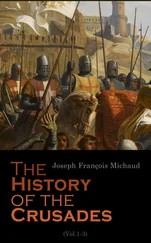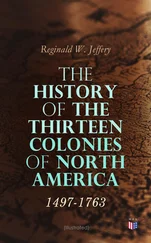Major Chisholm and Capt. Laing, learning of the disaster that had well-nigh swallowed up Sir Charles's army, retreated to Cape Coast. There were about thirty thousand troops remaining, but they were so terrified at the disaster of the day that they could not be induced to make a stand against the gallant Ashantees. The king of Ashantee, instead of following the routed army to the gates of Cape Coast, where he could have dealt it a death-blow, offered the English conditions of peace. Capt. Ricketts met the Ashantee messengers at Elmina, and heard from them the friendly messages of the king. The Ashantees only wanted the British to surrender Kudjoh Chibbu of the province of Denkera; but this fugitive from the Ashantee king, while negotiations were pending, resolved to rally the allied armies and make a bold stroke. He crossed the Prah at the head of a considerable force, and fell upon the Ashantee army in its camp. The English were charmed by this bold stroke, and sent a reserve force; but the whole army was again defeated by the Ashantees, and came back to Cape Coast in complete confusion.
The Ashantee army were at the gates of the town. Col. Southerland arrived with re-enforcements, but was beaten into the fort by the unyielding courage of the attacking force. A new king, Osai Ockote, arrived with fresh troops, and won the confidence of the army by marching right under the British guns, and hissing defiance into the face of the foe. The conflict that followed was severe, and destructive to both life and property. All the native and British forces were compelled to retire to the fort; while the Ashantee troops, inspired by the dashing bearing of their new king, closed in around them like tongues of steel. The invading army was not daunted by the belching cannon that cut away battalion after battalion. On they pressed for revenge and victory. The screams of fainting women and terrified children, the groans of the dying, and the bitter imprecations of desperate combatants—a mingling medley—swelled the great diapason of noisy battle. The eyes of the beleaguered were turned toward the setting sun, whose enormous disk was leaning against the far-away mountains, and casting his red and vermilion over the dusky faces of dead Ashantees and Fantis; and, imparting a momentary beauty to the features of the dead white men who fell so far away from home and friends, he sank to rest. There was a sad, far-off look in the eye of the impatient sailor who kept his lonely watch on the vessel that lay at rest on the sea. Night was wished for, prayed for, yearned for. It came at last, and threw its broad sable pinions over the dead, the dying, and the living. Hostilities were to be renewed in the morning; but the small-pox broke out among the soldiers, and the king of Ashantee retired.
Sir Neill Campbell was appointed governor-general at Cape Coast. One of his first acts was to call for all the chiefs of the Fantis, and give them to understand that hostilities between themselves and the king of Ashantee must stop. He then required Osai Ockoto to deposit four thousand ounces of gold ($72,000), as a bond to keep the peace. In case he provoked hostilities, the seventy-two thousand dollars were to be used to purchase ammunition with which to chastise him. In 1831 the king was obliged to send two of his royal family, Kwanta Missah, his own son, and Ansah, the son of the late king, to be held as hostages. These boys were sent to England, where they were educated, but are now residents of Ashantee.
Warsaw and Denkera, interior provinces, were lost to the Ashantee empire; but, nevertheless, it still remains one of the most powerful Negro empires of Western Africa.
The king of Ashantee has a fair government. His power is well-nigh absolute. He has a House of Lords, who have a check-power. Coomassi is the famous city of gold, situated in the centre of the empire. The communication through to the seacoast is unobstructed; and it is rather remarkable that the Ashantees are the only nation in Africa, who, living in the interior, have direct communication with the Caucasian. They have felt the somewhat elevating influence of Mohammedanism, and are not unconscious of the benefits derived by the literature and contact of the outside world. They are a remarkable people: brave, generous, industrious, and mentally capable. The day is not distant when the Ashantee kingdom will be won to the Saviour, and its inhabitants brought under the beneficent influences of Christian civilization.
62The following telegram shocks the civilized world. It serves notice on the Christians of the civilized world, that, in a large missionary sense, they have come far short of their duty to the "nations beyond," who sit in darkness and the shadow of death.
"Massacre Of Maidens. London, Nov. 10, 1881.—Advices from Cape Coast Castle report that the king of Ashantee killed two hundred young girls for the purpose of using their blood for mixing mortar for repair of one of the state buildings. The report of the massacre was received from a refugee chosen for one of the victims. Such wholesale massacres are known to be a custom with the king."— Cinn. Commercial.
CHAPTER VI.
THE NEGRO TYPE.
Table of Contents
Climate the Cause.—His Geographical Theatre.—He is susceptible to Christianity and Civilization.
If the reader will turn to a map of Africa, the Mountains of the Moon 63will be found to run right through the centre of that continent. They divide Africa into two almost equal parts. In a dialectic sense, also, Africa is divided. The Mountains of the Moon, running east and west, seem to be nature's dividing line between two distinct peoples. North of these wonderful mountains the languages are numerous and quite distinct, and lacking affinity. For centuries these tribes have lived in the same latitude, under the same climatic influences, and yet, without a written standard, have preserved the idiomatic coloring of their tribal language without corruption. Thus they have eluded the fate that has overtaken all other races who without a written language, living together by the laws of affinity, sooner or later have found one medium of speech as inevitable as necessary.
But coming south of the Mountains of the Moon, until we reach the Cape of Good Hope, there is to be found one great family. Nor is the difference between the northern and southern tribes only linguistic. The physiological difference between these people is great. They range in color from the dead black up to pure white, and from the dwarfs on the banks of the Casemanche to the tall and giant-like Vei tribe of Cape Mount.
"The Fans which inhabit the mountain terraces are altogether of a different complexion from the seacoast tribes. Their hair is longer: that of the women hangs down in long braids to their shoulders, while the men have tolerably long two-pointed beards. It would be impossible to find such long hair among the coast tribes, even in a single instance.
"In the low, swampy land at the mouth of the Congo, one meets with typical Negroes; and there again, as one reaches a higher soil, one finds a different class of people.
"The Angolese resemble the Fula. They are scarcely ever black. Their hands and feet are exquisitely small; and in every way they form a contrast with the slaves of the Portuguese, who, brought for the most part from the Congo, are brutal and debased.
"I have divided Africa into three grand types—the Ethiopian, the intermediate, and the Negro. In the same manner the Negro may be divided into three sub-classes:—
"The bronze-colored class: gracefully formed, with effeminate features, small hands and feet, long fingers, intelligent minds, courteous and polished manners. Such are the Mpongwe of the Gaboon, the Angolese, the Fanti of the Gold Coast, and most probably the Haoussa of the Niger, a tribe with which I am not acquainted.
Читать дальше












